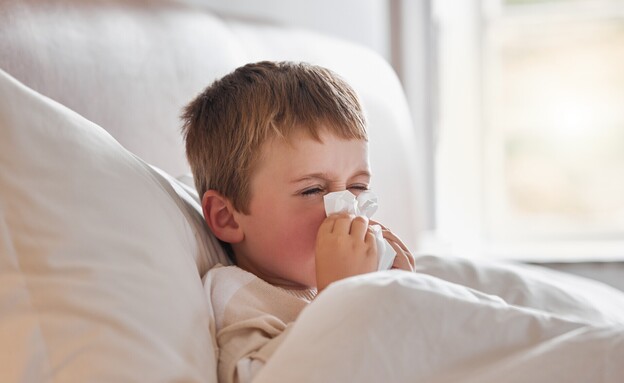According to Prof. Steve Cunningham from the Department of Child Life and Health at the University of Edinburgh, one of the leaders of the research, children suffer between 10 and 12 times a year from upper respiratory tract infections, what is known as a cold or a cold. The situation significantly affects the children as well as their families and routine conduct. “It is true that there are over-the-counter medicines that can improve the symptoms, but so far there has been no talk of treatments that can shorten the duration of a cold,” he explains.
The course of the research and its results
407 children up to the age of 6 were recruited for the study, 301 of whom developed a cold. The children who got sick were randomly divided into two groups – 150 children received nasal drops with a concentration of 2.6% saline – three drops per nostril, a minimum of four times a day. The other 151 children received routine treatment to improve symptoms.
According to the findings, children who received treatment with saline drops experienced cold symptoms for an average of six days, while those who received standard treatment experienced symptoms for eight days. Moreover, the children who received saline drops required less medication during their illness.
It was also found in the study that households of children who received salt water drops reported less catching colds among family members – 46% compared to 61% for standard treatment. 82% of the parents testified that the nasal drops helped the child get better quickly and 81% said they would use these drops in the future.
Pediatrician: “Good and cheap technique”
Dr. Dov Tschernin, an expert in pediatrics at Maccabi Health Services refers to the study and says that it is a good and cheap technique. “I personally also use it in my clinic, and in fact the current study proves its effectiveness for the first time.”
The doctor explains that the researchers used high-concentration saline (saline), as opposed to a low-concentration saline solution that is often used when performing inhalations. “Salt is a mineral consisting of the two elements sodium and chlorine. An increase in the concentration of chlorine causes the nasal mucosa to reject the viruses, and thus they ‘stick’ to it less well.” He adds that the high concentration of chlorine also dries out the nasal mucosa and prevents increased secretion of fluid, meaning it stops the runny nose. He notes that a concentrated salt water solution A high of 3% can be purchased in pharmacies without a prescription.
By the way, he notes that the recommended way is to use salt water in drops, although a spray can help in cases of difficulty breastfeeding or eating. “Saline spray usually doesn’t reach the back of the nose but only the mucous membrane, so I don’t recommend it. The best thing is to lay the baby on his back and drip about half a ml into each nostril. On the other hand, precisely in cases where the child has a cold and is unable to nurse or eat, it can certainly help because it allows the blocked area to be released for a few minutes, and this can help. In that case, you can inject a little spray into each nostril before feeding.”
Dr. Tschernin says that colds are common these days of the transition seasons, with the return to educational institutions after vacations and holidays. “I think that the use of a salt water solution is a very good idea that will gain momentum in the near future, partly as a result of this research. By the way, I usually advise parents of small children not to drip the solution into the nose, but to lay them on their backs, and gently insert the solution using a 0.5 ml syringe into each nostril. During this period, it is also important to get vaccinated against the flu, it is especially important for the public to suffer from the complications of the flu, Including babies and children between the ages of six months and 5 years old.”
